|
Scratchbuilt 1/5
scale
Supermarine Spitfire Mk.I
by
David Glen
|
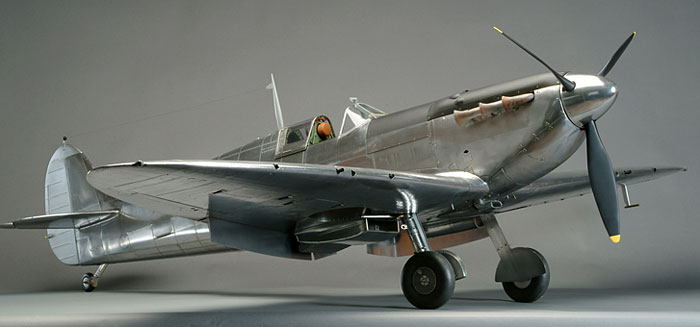 |
|
Supermarine Spitfire
Mk.I |

HyperScale is proudly supported by Squadron.com
If anyone asked me why I set to build a Spitfire in one-fifth scale,
and detailed to the last rivet and fastener, I would probably be
hard-pushed for a practical or even sensible answer. Perhaps the closest
I can get is that since a small child I have been awe inspired by R. J.
Mitchellís elliptical winged masterpiece, and that to build a small
replica is the closest I will ever aspire to possession.
The job took me well over eleven years, during which there were times I
very nearly came to giving the project up for lost. The sheer amount of
work involved, countless hours, proved almost too much, were it not for
a serendipitous encounter at my flying club in Cambridge with Dr Michael
Fopp, Director General of the Royal Air Force Museum in England.
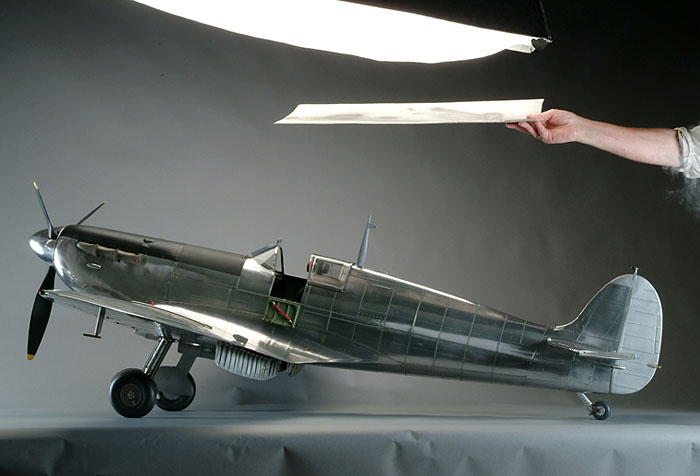
Seeing the near complete fuselage, he urged me to go on and finish the
model, promising that he would put it on display. I was flabbergasted,
for when I started I had no inkling that my work would end up in a
position of honour in one of the worldís premier aviation museums.
As I write, the case for the model is being prepared, having been
specially commissioned by the museum with a case-maker in Sweden. I have
not yet seen it, but from what I hear, it is enormous!
In one respect the story has gone full circle, since it was at Hendon
where I started my research in earnest, sourcing Microfilm copies of
many original Supermarine drawings, without which such a detailed build
would not have been possible.
The model is skinned with litho plate over a balsa core and has been
left in bare metal at the suggestion of Michael Fopp, so that the
structure is seen to best advantage. The rivets are real and many are
pushed into drilled holes in the skin and underlying balsa, but many
more are actual mechanical fixings. I have no accurate count, but I
suspect that there are at least 19,000!
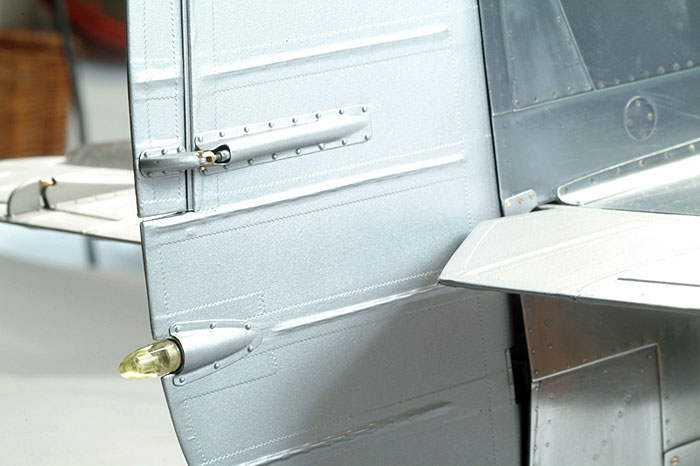
All interior detail is build from a combination of Supermarine
drawings and workshop manuals, plus countless photographs of my own,
many of them taken opportunistically when I was a volunteer at the
Duxford Aviation Society based at Duxford Airfield, home of the
incomparable Imperial War Museum collection in Cambridgeshire, England.
Spitfires, in various marks are, dare I say, a common feature there!
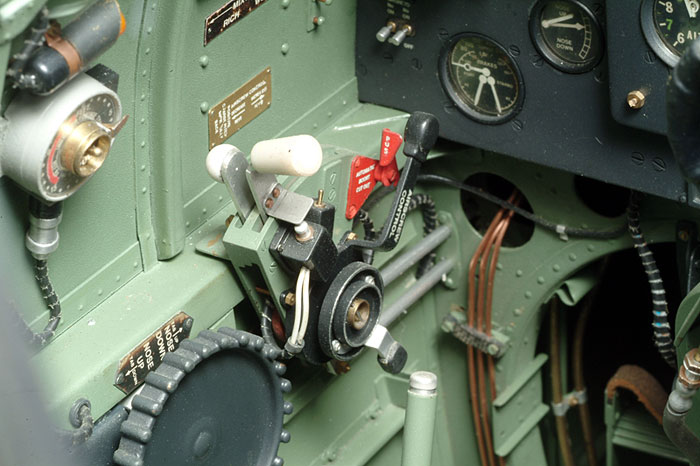
Click on the thumbnails
below to view larger images:
The degree of detail is probably obsessive: The needles of the dials
in the cockpit actually stand proud of the instrument faces, but you
have to look hard to see it!
Why the flat canopy? Well, the early Mk.Is had them, and I had no
means to blow a bubble hood, so it was convenient. Similarly the covers
over the wheels were another early feature and they saved me a
challenging task of replicating the wheel castings.
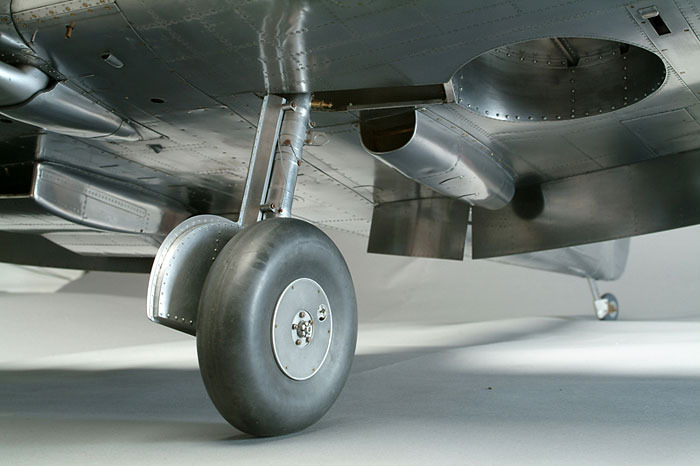
The model has its mistakes, but Iíll leave the experts to spot them, as
they most certainly will, plus others I donít even know about. I donít
pretend the little Spitfire is perfect, but I do hope it has captured
something of the spirit and incomparable beauty of this magnificent
fighter Ė perhaps the closest to a union that art and technology have
ever come Ė a killing machine with lines that are almost sublime.
So, with the model now in its magnificent new home, what comes next?
Well, Iím planning a book that will have a lot to say about its genesis
and perhaps just a little about me and those dear to me, including a
long suffering but understanding and supportive wife. And then thereís
the MustangÖ Yes, a 1/5th scale P-51D is already taking shape in my
workshop. How long will it take? Iíve no idea, but what I am sure of is
that at my age (58) I canít expect to be building many of them!
David Glen
Whaddon, Cambridge
Click on the thumbnails
below to view larger images:
Model, Images and Text Copyright ©
2006 by David Glen
Page Created 07 December, 2006
Last Updated 06 December, 2006
Back to HyperScale
Main Page
|
Home
| What's New |
Features |
Gallery |
Reviews |
Reference |
Forum |
Search